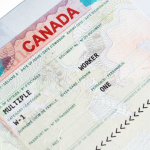Starting your own business is an exciting journey full of possibilities, but navigating the ins and outs of setting up a UK limited company can seem overwhelming. From registration to operation, there are many steps to consider along the way. But fear not! In this blog post, we will break down the process of how to register a limited company and provide you with all the information you need to set up your UK enterprise with ease.
Intro to UK limited companies and their benefits
When it comes to setting up a business in the United Kingdom, one of the most popular forms of legal structure is a limited company. This type of company offers unique benefits and advantages that make it an attractive option for entrepreneurs and small business owners.
Firstly, a limited company is a separate legal entity from its owners, meaning that it has its own assets, liabilities, and rights. This provides protection for the personal assets of the company’s directors and shareholders in case of any financial or legal issues. In other words, if the company were to go bankrupt or face legal action, its owners would not be held personally liable.
Perhaps one of the most appealing benefits is that setting up a limited company enables businesses to raise capital easier than other types of entities. This is because they can issue shares to investors and have different classes such as ordinary shares or preference shares with varying rights attached to them.
Choosing to register as a UK limited company brings numerous advantages from asset protection and improved credibility to potential tax savings and better control over the distribution of profits. In the following sections, we will delve deeper into the process of setting up and running a UK limited company, including key legal requirements and necessary steps to take.
Registering a limited company with Companies House
Registering a limited company with Companies House is an essential step in setting up a business in the UK. It not only gives your business a legal identity but also provides credibility and protection for its directors and shareholders. Here is a detailed guide to help you through the process of registering your limited company with Companies House.
Choose Your Company Name: The first step to registering a limited company is choosing a unique name for your business. The name should not be identical or too similar to another registered company, and it must not contain sensitive words or expressions without permission. You can check the availability of your chosen name on the Companies House website.
Decide on Directors and Shareholders: A limited company must have at least one director who will be responsible for managing the company’s affairs. They must be over 16 years old and cannot be declared bankrupt. You also need to decide on the number of shareholders, who are individuals or entities that own shares in the company.
Choose Your Company Address: As part of the registration process, you need to provide a registered office address where all official documents will be sent by mail. This address can be different from your actual place of business.
Prepare Documents for Registration: You need to prepare some essential documents before registering your limited company with Companies House. These include Memorandum of Association (containing details about shareholders), Articles of Association (describing how the company will operate), and Form IN01 (containing information about directors, shareholders, share capital, etc.).
Register Online or via Post: Once you have gathered all necessary documents, you can register your limited company online through Companies House website or by post using paper forms (Form IN01). The online registration process is faster, cheaper and allows more flexibility during completion compared to postal application.
Pay Required Fees: To register your limited company, you need to pay a registration fee of £12 if done online or £40 via post. You also need to pay for any additional services like same-day registration (if desired) and hard copies of registration documents.
Wait for Confirmation: After registering your limited company, it usually takes 24 hours to receive a digital confirmation of incorporation along with your company’s unique registration number (CRN). A paper copy of the certificate of incorporation will also be sent by mail within a few days.
Registering a limited company with Companies House is an important step towards establishing a business in the UK. By following these seven steps, you can ensure that your company is set up correctly and ready to operate legally and efficiently.
Completing necessary documentation and paperwork
Completing necessary documentation and paperwork is an essential step in the process of setting up a UK limited company. While it may seem overwhelming and time-consuming, proper completion and organisation of these documents are crucial for the smooth operation of your business.
The first document that needs to be completed is the Memorandum and Articles of Association. This document outlines the rules, regulations, and objectives of your company, as well as its shareholders and directors. It must be drafted according to the guidelines set by Companies House and signed by all initial shareholders.
Next is the Form IN01, which is used for registering your company with Companies House. This form requires information such as your company name, registered address, shareholder details, share capital, and confirmation statement. It is important to ensure that all information provided is accurate as any mistakes can lead to delays or complications in the registration process.
Following this, you will need to complete a Director’s Consent form, which confirms that all appointed directors have agreed to take on their roles within the company. Additionally, each director will also need to provide proof of identity through certified copies of their passport or driver’s licence.
As part of setting up a UK limited company, you will also need to register for corporation tax with HM Revenue & Customs (HMRC). This can be done online by completing form CT41G or via post by filling out form CT41G (Companies) or CT41D (LLPs). You will need details about your business activities and anticipated profits in order to complete these forms accurately.
Other necessary paperwork includes obtaining Employer Identification Numbers (EIN) from HMRC if you plan on hiring employees for your business. If you are operating from a commercial property, you may also need permissions such as planning permission or licence depending on the type of business activity.
Concluding
After following all the necessary steps for setting up a UK limited company, it is important to take a moment and reflect on the process. Congratulations on successfully completing the registration and operational procedures! Now that your company is up and running, there are a few final thoughts and pieces of advice that can help ensure a smooth and successful setup.
Setting up a UK limited company requires careful planning, attention to detail, and continuous effort. Following the steps outlined in this guide and keeping these final thoughts and advice in mind will help ensure a smooth and successful setup for your business. Remember to stay organised, communicate effectively, network with stakeholders, research the market thoroughly, and have contingency plans in place. Best of luck!






























